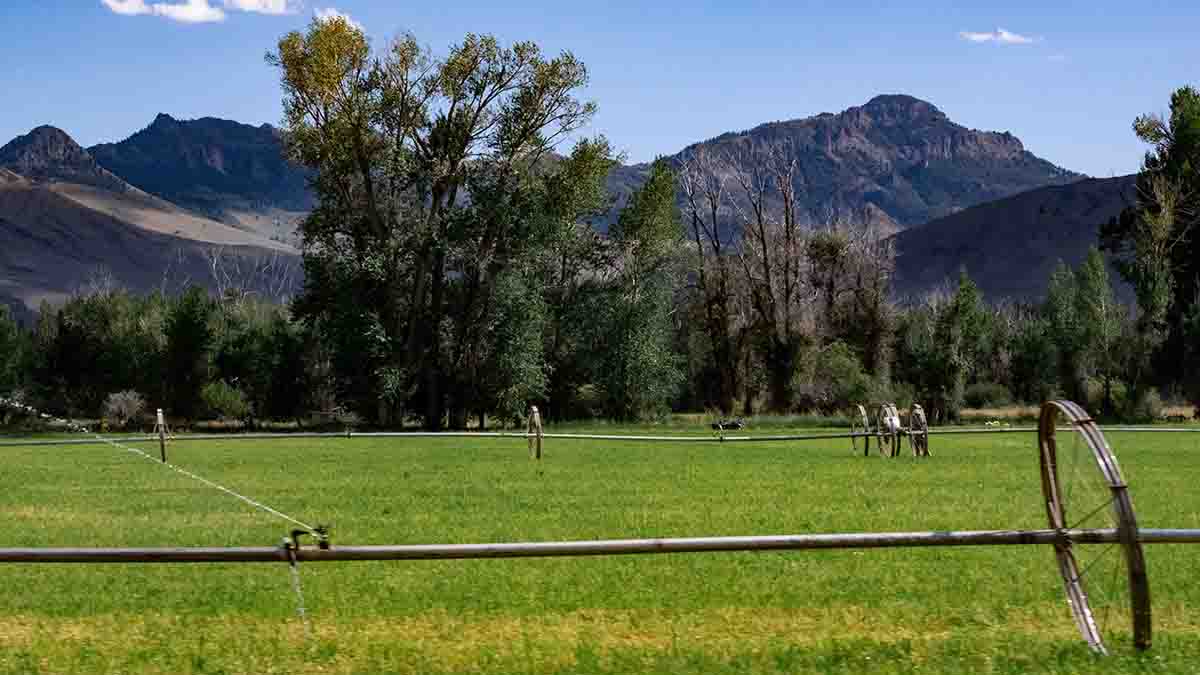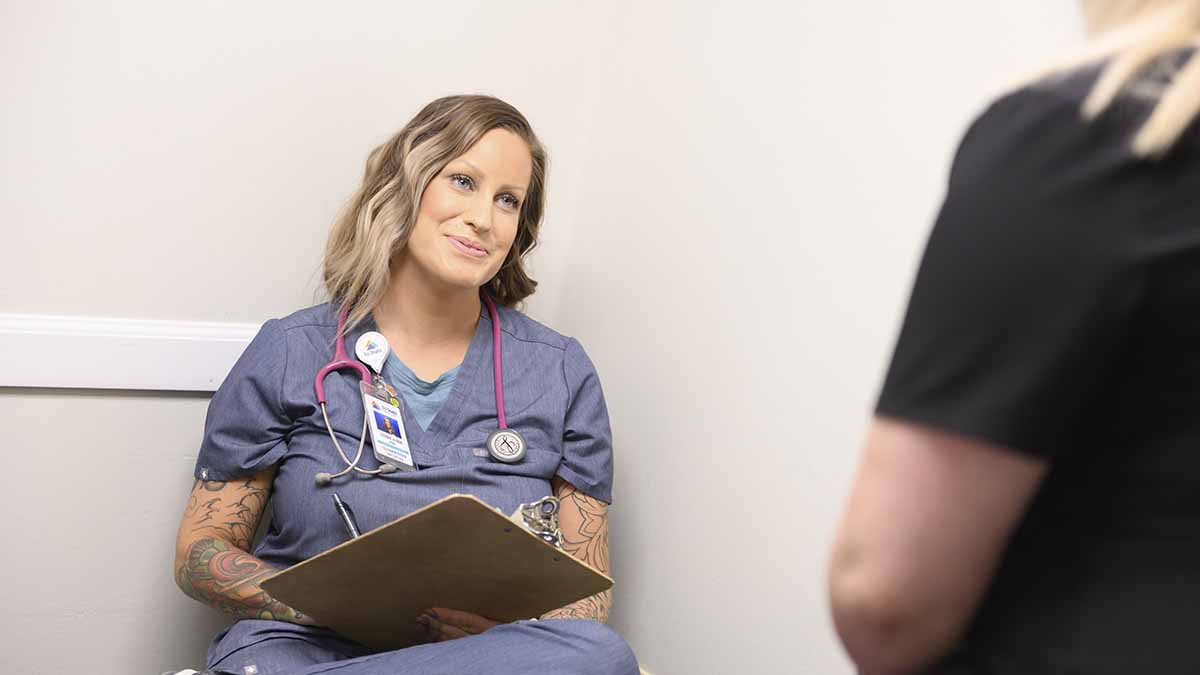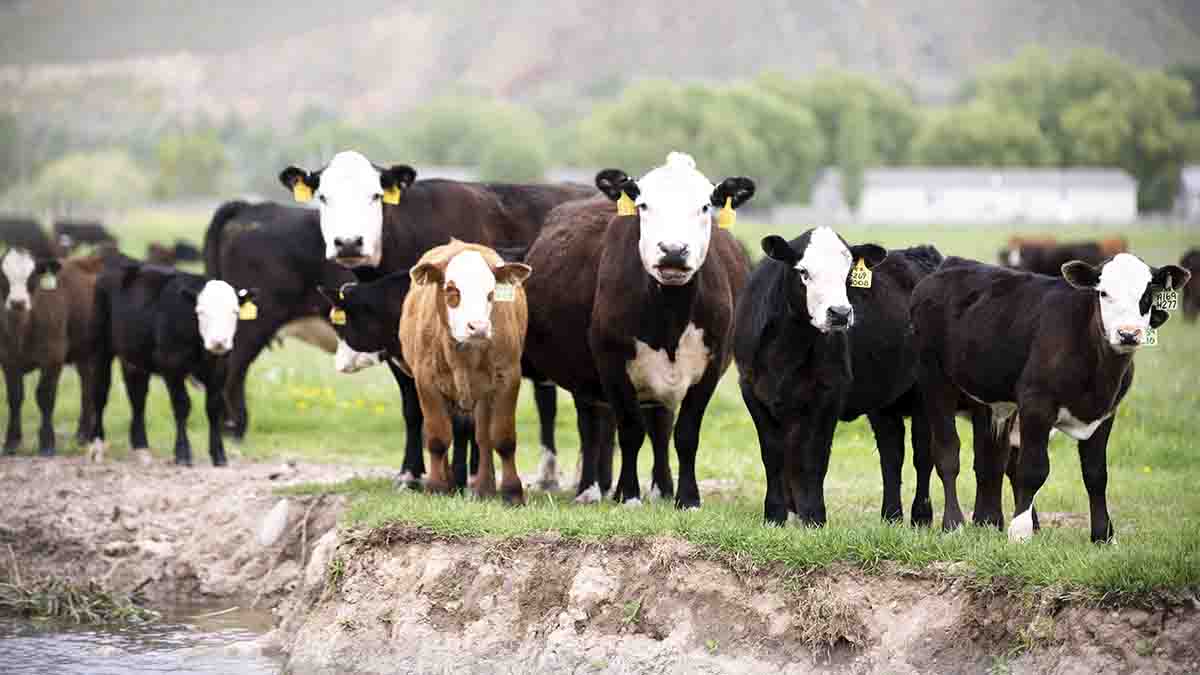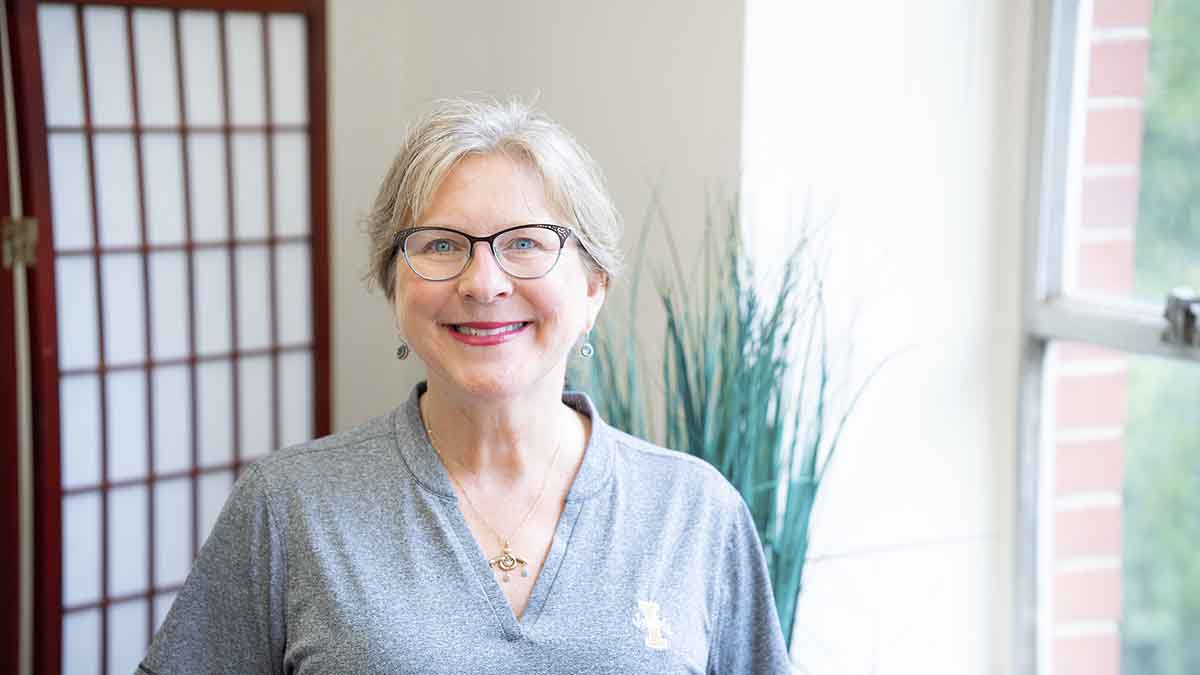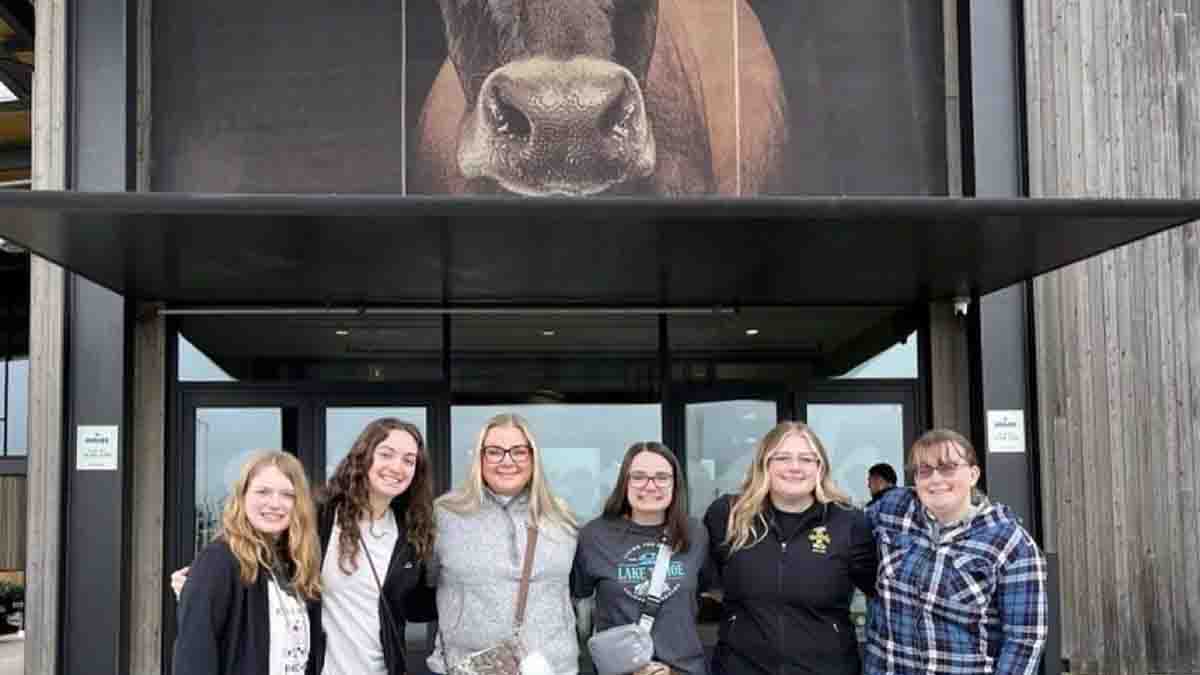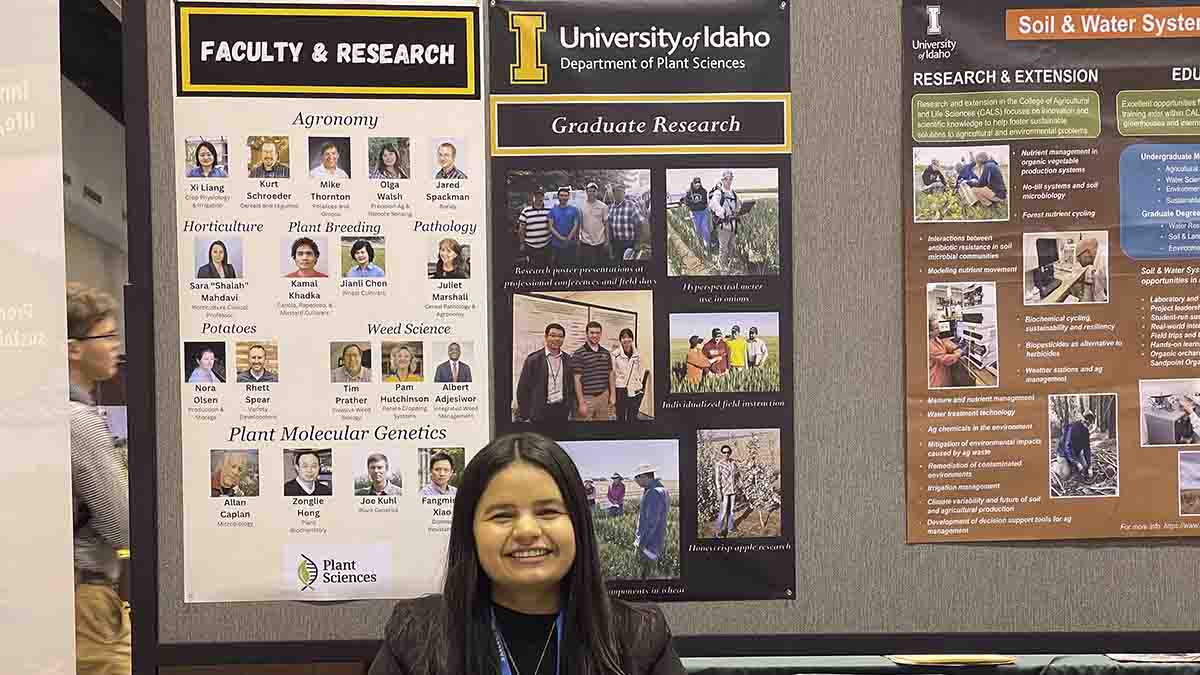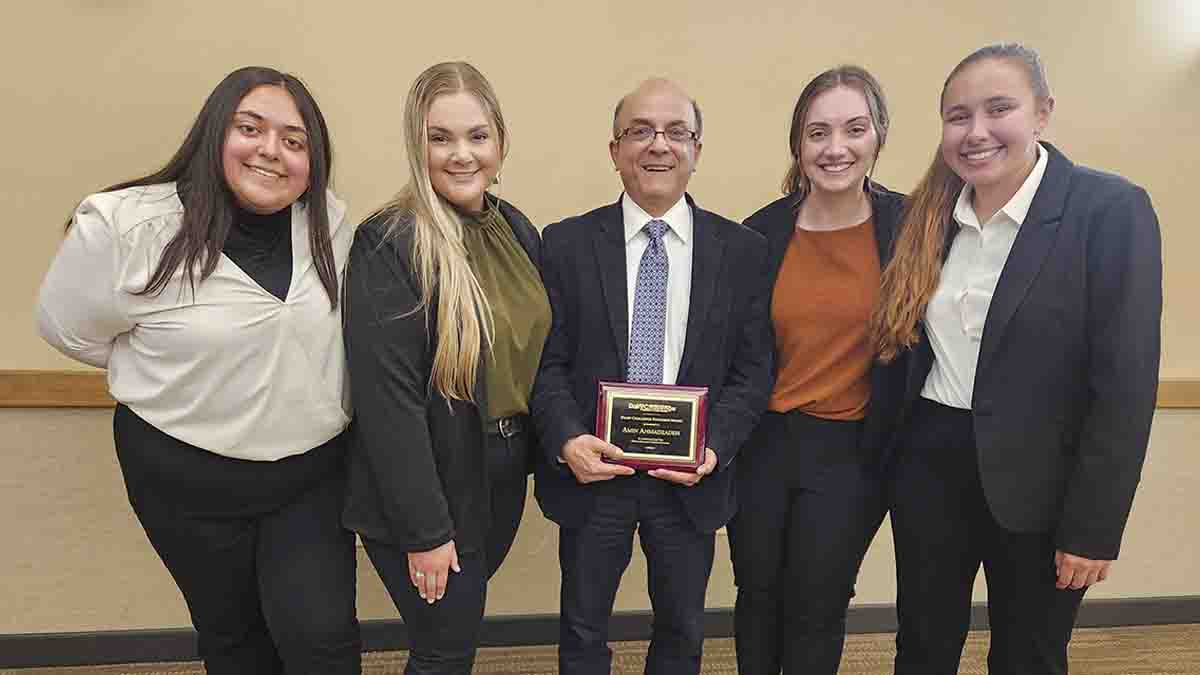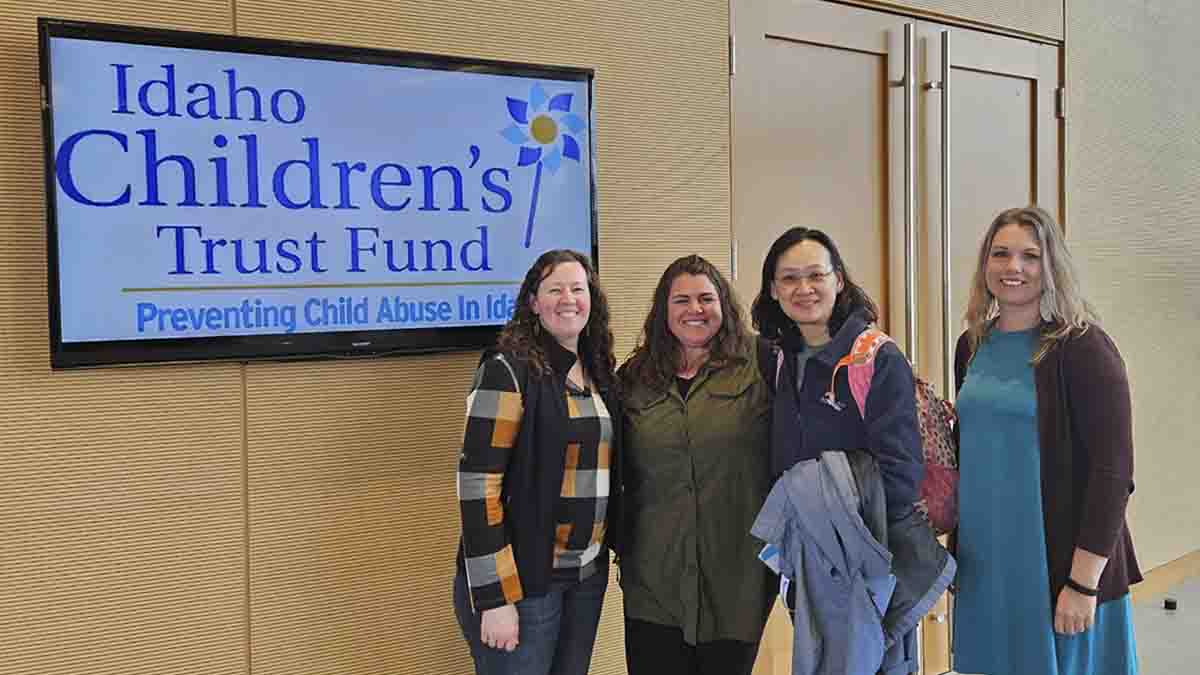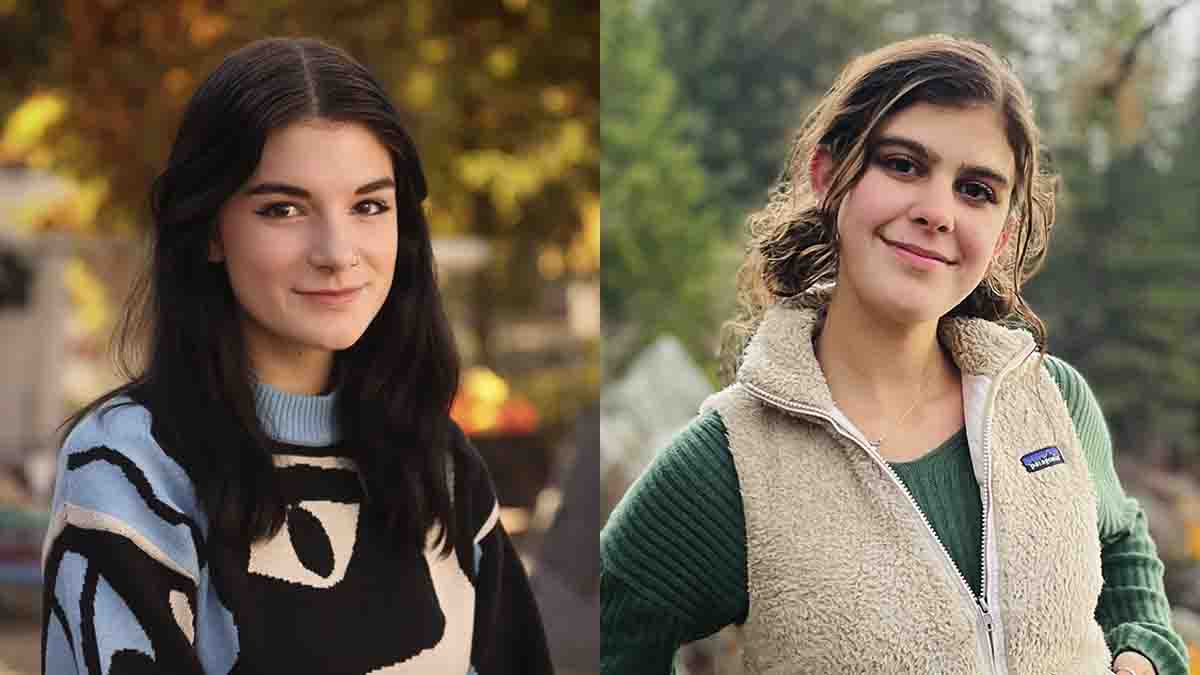Catching Up with CALS — April 17, 2024
Dean's Message — Gaining Steam Together
College faculty gathered on campus from all corners of the state on April 9 for All CALS Day and related activities, celebrating our incredible recent successes and fostering collaborations that will pay dividends heading forward. Individual CALS departments and the Margaret Ritchie School of Family and Consumer Sciences (FCS) held their own gatherings throughout the week, and University of Idaho Extension hosted its annual conference in conjunction with the festivities. University of Idaho Provost Torrey Lawrence offered our team updates on major campus developments, such as our ongoing efforts to acquire the University of Phoenix. I spoke about the overwhelmingly positive trajectory of CALS, and UI Extension Director Barbara Petty cited statistics demonstrating how our Extension network is improving the quality of life ranging from the Gem State’s smallest rural areas to its largest urban centers. The new curator of our Stillinger Herbarium, Kai Battenburg, and the new director of our Seed Potato Germplasm laboratory, Kayla Spawton, led tours of their respective facilities.
A keynote speaker, Brent McCall, who is the president and founder of Presentation Impact, inspired us with his insights about the qualities of an effective leader. McCall has studied how people who aren’t in positions of authority can, nonetheless, exert their influence to get the most out of colleagues. McCall explained that relying on the authority of one’s position doesn’t take a leader very far. Rather, the magic happens when leaders foster an environment that motivates others to strive to meet their potential. Leading through inspiration has become the norm within CALS, helping us grow our programs, better serve our diverse stakeholders and bring in more external funding than ever before. Aside from the speakers and workshops, perhaps the most valuable time came during discussions over meals, brief visits amid breaks and unwinding with colleagues. When we bring off-campus Extension faculty together with academic faculty on campus, we raise awareness about the groundbreaking research taking place within our college, as well as opportunities for our faculty to share perspectives and expertise.
As a college, we’ve received a lot of encouraging news recently. We’re poised to commence with a hiring flurry and anticipate upwards of a dozen new faculty joining our ranks in the coming year. We’ve received outstanding support from the state — our state general education budget will increase by about 6% to roughly $3.4 million. Furthermore, the budget recently signed by Gov. Brad Little fully funds our Agricultural Research and Extension Service request for fiscal year 2025. It includes $232,600 to cover occupancy costs of our new Idaho Center for Plant and Soil Health at the Parma Research and Extension Center. Two new faculty positions — a Kimberly-based agricultural engineer with an irrigation specialty and a forestry specialist within the College of Natural Resources — will be added with $325,100 in funding. We also received approval to spend $142,000 in federal funding to continue delivering the Extension adult computer literacy program that seeks to bridge the digital divide between computer and internet access in Idaho’s rural versus urban communities. To cap off a successful legislative session, we also secured $2 million to fully cover costs of building our forthcoming Meat Science and Innovation Center Honoring Ron Richard through our request to the state permanent building fund.
Total grant awards for CALS in 2023 totaled a record $91.5 million, counting the $55 million USDA award called the Innovative Agriculture and Marketing Partnership, which represents the largest grant ever received by U of I. I believe we’ve forever raised the bar regarding our grant support. Earlier this month, the National Institutes of Health awarded Shelley McGuire, professor of nutrition and FCS director, more than $11 million toward creating a research center focused on furthering studies on women’s health and nutrition. Within the Department of Soil and Water Systems, Erin Brooks, a professor of agricultural engineering, and Meetpal Kukal, our new water modeler, received $1 million from the Idaho Department of Water Resources to research evapotranspiration. Izabelle Teixeira, an Extension dairy specialist, is the principal investigator of a $350,000 National Science Foundation grant to develop a web-based tool to help dairies enhance nutrient utilization from feed and reduce environmental impacts. Take a moment to reflect upon our many accomplishments and keep up the good work. As President Scott Green regularly states, the University of Idaho is a university on the rise. The faculty in CALS are a major contributor toward that success.

Michael P. Parrella
Dean
College of Agricultural and Life Sciences
By the Numbers
In 2023, more than 75,000 youth engaged in University of Idaho Extension 4-H Youth Development programming, and 4-H made more than 190,000 face-to-face contacts with youth. There were 75,000 educational 4-H program contacts. 4-H had more than 13,000 club members, and 2,116 certified 4-H volunteers contributed $3,499,017 in volunteer time, based on giving one hour of time per week valued at $31.80 per hour. Furthermore, there were 959 4-H clubs.
Our Stories
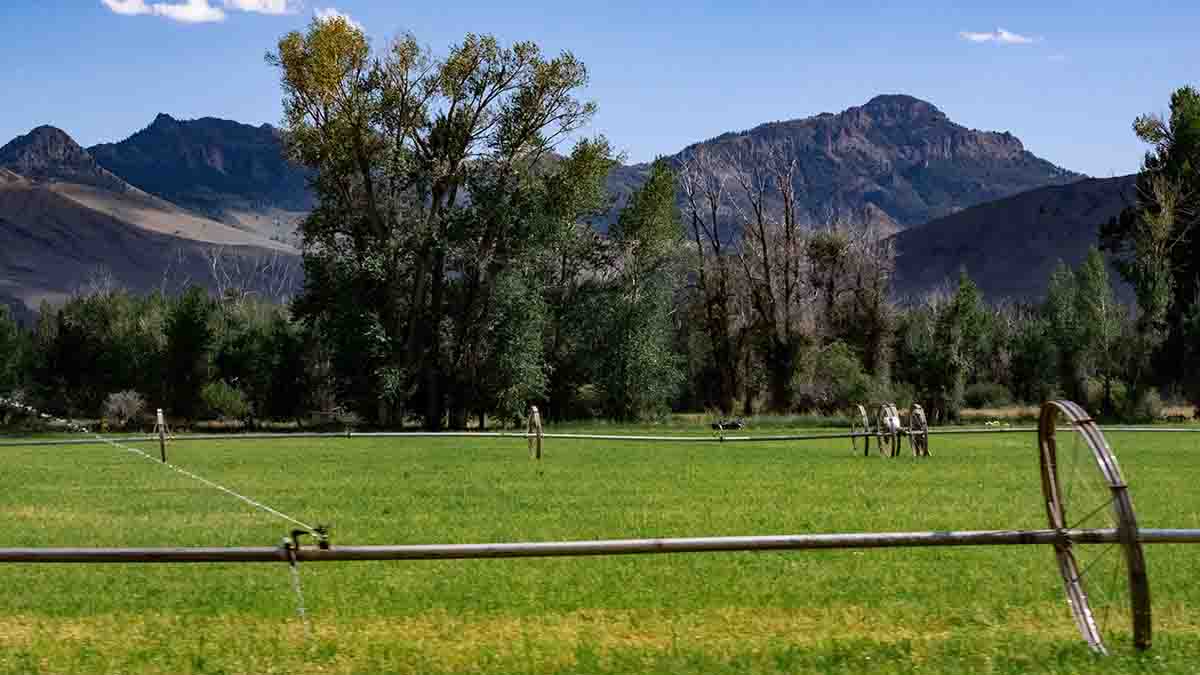
Heightened Water Focus
University of Idaho is stepping up its research and outreach efforts to help maximize the use of one of the state’s most precious natural resources — its water supply.
The College of Agricultural and Life Sciences (CALS) has made some recent hires to bolster its team of water experts and is seeking to fill additional positions to help address critical issues in the water-constrained West.
Idaho has 3.4 million acres of irrigated cropland, and 86% of water withdrawn in the state is used for agricultural purposes.
The state Legislature and Gov. Brad Little recently authorized the college to hire an irrigation Extension specialist, who will be based in southern Idaho.
“The state is the third largest irrigator in the nation right after California and Texas,” said Robert Heinse, acting head of the Department of Soil and Water Systems. “An irrigation specialist is important in a state like this.”
The position will educate growers, fieldmen and students on the design and function of sustainable, data-driven irrigation and water management systems and practices. The search will begin soon.
The college’s previous Extension irrigation specialist, Howard Neibling, who retired in March of 2022, helped innovate an irrigation system known as low elevation sprinkler application (LESA), which uses hoses on pivots to dangle spray nozzles beneath the crop canopy, thereby reducing water drift and evaporation.
“The expectation is whoever gets hired in this position will continue efforts to work towards irrigation efficiency and water-use efficiency and be the connector of what research can do and technology can do in terms of variable application rates and relay the information to the growers out there,” Heinse said.
CALS has hired Meetpal Kukal, an assistant professor of agricultural and biological engineering with Penn State University, as a new water modeler within the Department of Soil and Water Systems. Kukal will be based in Boise and will start work in August, filling the position vacated when Richard Allen retired in 2022.
Allen did groundbreaking research in the use of satellite remote sensing to quantify evapotranspiration from crops. He also incorporated remote-sensing data into modeling, which provided a tool to aid the Idaho Department of Water Resources (IDWR) in water budgets and groundwater modeling.
“Before Dr. Richard Allen’s retirement, his research group at the University of Idaho Kimberly Research and Extension Center collaborated with IDWR for many years to innovate state-of-the-art methods for quantifying evapotranspiration,” said Phil Blankenau, an evapotranspiration analyst with IDWR. “The university’s newly hired assistant professor, Dr. Meetpal Kukal, brings expertise in agricultural evapotranspiration and evapotranspiration measurement techniques. Dr. Kukal will be a valuable resource for IDWR.”
Heinse believes the addition of Kukal and the future irrigation specialist will elevate the university’s standing as a major contributor of water and irrigation science, bringing it closer to President Scott Green’s goal of establishing U of I as the “University of Water.”
“The expectation is these two positions will work together and there’s going to be synergies between the Extension irrigation piece and the research irrigation piece,” Heinse said.
CALS has also hired Christa Howarth as a new assistant Extension water educator based in Boise. Howarth, who earned a master’s degree in environmental science through U of I’s McCall Outdoor Science School, started on March 4.
Howarth will teach Project Wet, a program that trains teachers to incorporate lessons in water into their curriculum. Howarth will also facilitate the IDAH2O Master Water Stewards program, which tasks volunteers with monitoring water quality of streams and ponds. The position will be funded for the first year with part of a $650,000 National Science Foundation Accelerator grant, awarded jointly to Boise State University and U of I.
Howarth aims to start a Treasure Valley version of the Confluence Project, which is a northern Idaho program that has high school students study water quality in the field with experts.
“As part of the grant we are actively interviewing stakeholders and end users in order to understand water education needs in the Treasure Valley so we can tailor my Extension position toward meeting those needs,” Howarth said.
U of I is also searching for a new director for its Idaho Water Resources Research Institute (IWRRI), which is among the nation’s 54 water research and technology centers. IWRRI conducts and directs research in support of the water needs of the state, region and nation.
Jim Ekins, area water Extension educator based in Coeur d’Alene, is working on a project that should expand the influence of U of I’s new water personnel. Ekins serves on the leadership team of the Western Water Network, which is being developed by the Western Association of Agricultural Experiment Directors to help institutions share water expertise and collaborate on projects.
“We are trying to develop a network of experts realizing there are very few water educators in Extension and there’s a great need for research and extension related to water,” Ekins said. “We are going to try to leverage our resources related to water.”
To some degree, most CALS initiatives involve using the state’s water resources as efficiently as possible. For example, water conservation and water delivery are central themes of both the Innovative Agriculture and Marketing Partnership (IAMP), which is a $55 million grant CALS researchers received from the U.S. Department of Agriculture to study climate-smart agricultural production practices, and in the soil health demonstration farm, which is part of the Idaho Center for Agriculture, Food and the Environment (Idaho CAFE). Idaho CAFE, based in Rupert, will include the nation’s largest research dairy, and the demonstration farm will facilitate studies on the relationship between application of dairy nutrients and soil health and water quality.
Furthermore, the university-run Aquaculture Research Institute, which has facilities in Moscow and Hagerman, promotes science benefiting native fish populations, and maintaining adequate river flows and water quality is central in that mission.
“We’re a player in water at many levels,” said CALS Dean Michael Parrella. “Eventually, everything revolves around water and water-use efficiency.”
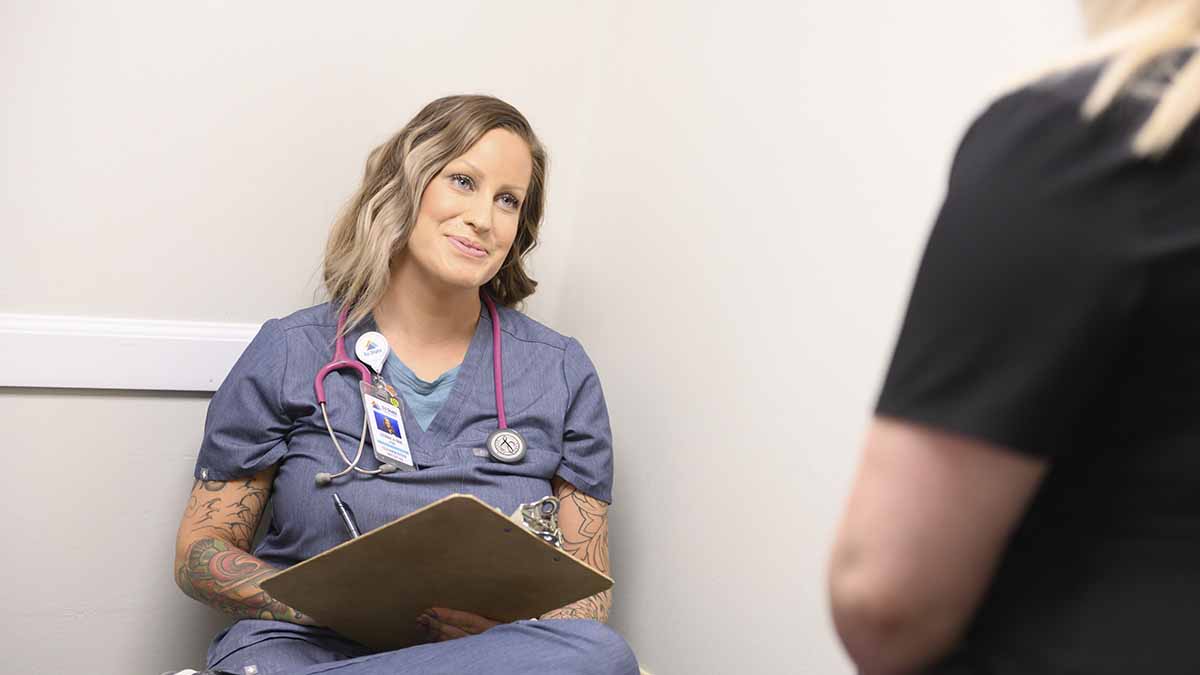
New Research Center
The National Institutes of Health (NIH) has awarded the University of Idaho more than $11 million toward creating a campus-based biomedical research center furthering studies on women’s health and nutrition.
Shelley McGuire, professor of nutrition and director of the Margaret Ritchie School of Family and Consumer Sciences (FCS), recently received confirmation of her successful application for the NIH Center of Biomedical Research Excellence (COBRE) grant and will serve as project director and principal investigator. McGuire, a maternal-infant nutritionist with expertise in breastfeeding and lactation, was recently elected to the National Academy of Medicine.
“It’s going to bolster our ability to do high-level, federally funded research on a topic that should be important to every single human,” McGuire said. “We are hoping to have impacts in the state, region and nation.”
The COBRE will span five years, retroactive to Jan. 1, in its initial phase, and U of I will be eligible to apply for two additional five-year phases of funding.
The funds will cover two administrative staff members and four new faculty positions — including two new FCS faculty, a health psychologist within the Department of Psychology and Communication Studies and an expert at analyzing large datasets or other types of data related to nutrition and women’s health from the Department of Mathematics and Statistical Science.
The COBRE names three initial research project leaders. Yimin Chen, an assistant professor in FCS specializing in maternal nutrition and human milk composition, will study the impact of postpartum vitamin D supplementation on maternal depression. Ginny Lane, an assistant professor in FCS specializing in community and global nutrition, will study type 2 diabetes among Hispanic women living in Idaho. Ann Brown, an associate professor of exercise physiology and associate dean of graduate studies in the College of Education, Health and Human Sciences, will study the health ramifications for women, including college-age athletes, of having a normal body weight but still carrying excess fat tissue similar to that of an obese person.
Chen will receive $711,286 and will bring on a doctoral student dedicated to the project. “The importance of the research is being able to potentially address the under-appreciated issue of maternal stress in new moms with an easily accessible and straightforward intervention of vitamin D supplementation,” Chen said. “By reducing maternal stress, it may have beneficial health outcomes — including mental health outcomes — in both moms and babies.”
Lane will receive $835,000 to “understand the complex intersections of nutrition, gender roles, ethnicity and mental health as they relate to the development of diabetes and treatment-seeking behaviors among Hispanic women to inform improvements to diabetes prevention and treatment programming.”
“While 11% of the U.S. population has type 2 diabetes, 17% of Hispanics have type 2 diabetes, indicating a serious health disparity,” Lane said. “Hispanics are at 30% higher risk of death due to diabetes than non-Hispanic whites and have higher risks of complications — for example visual impairments — than non-Hispanic whites.”
Brown is set to receive $1 million from the COBRE, which has allowed her to hire a new postdoctoral researcher, a doctoral student and a medical student with the Washington, Wyoming, Alaska, Montana and Idaho (WWAMI) medical education program. Brown is also receiving COBRE funds to purchase equipment for use in her research, including for testing muscle strength and quality and intracellular and extracellular body water.
“We have some really incredible equipment on campus, but the COBRE allows us to expand to understanding things on a cellular level,” Brown said. “It will be a huge recruiting tool to bring more students and postdocs here just because of the resources we have.”
Research project leaders will be encouraged to pursue separate NIH funding in the first year and will not be allowed to remain on the COBRE for more than three years, thereby creating opportunities for additional research projects to be selected.
Furthermore, researchers from any U of I college will be eligible to apply for up to $100,000 per year in combined funds for relevant pilot projects, and McGuire has already received inquiries about the opportunity from faculty in four different colleges.
American women face a heightened risk of malnutrition — 12% struggle with anemia while 60% are overweight. Malnutrition is an especially serious problem in Idaho, where 12% of the general population is food insecure, compared with 10% nationally.
“The whole topic of health and nutrition in women is important from early life, through breastfeeding, through pregnancy and all the way until women get older when we have a higher risk of poor health outcomes like osteoporosis and specific types of cancer,” McGuire said.
The COBRE’s administrative team will also include Mark McGuire, university distinguished professor, associate dean of research and director of the Idaho Agricultural Experiment Station, and Janet Williams, a senior research scientist with the Department of Animal, Veterinary and Food Sciences, who will oversee a nutrition analytics lab developed for the program.
Project ECHO, a component of WWAMI, will aid the project in delivering evidence-based information to rural physicians and health care workers. Similarly, the university’s Women’s Center and UI Extension will help disseminate related information to the university and state. The COBRE also includes leadership training to help its research project leaders grow as campus leaders.
“My vision is that all of these people will end up in leadership roles and they will become a voice in academic leadership that considers rigorous research and women’s health on a daily basis,” McGuire said.
The COBRE program supports the establishment and development of innovative, state-of-the-art biomedical and behavioral research centers at institutions in states with historically poor success at landing NIH awards. Idaho ranks 49th among states at obtaining NIH funds.
McGuire’s COBRE represents the fourth COBRE in U of I’s history. U of I has one other active COBRE — the Institute for Modeling Collaboration and Innovation — which is in its ninth year and is run by Holly Wichman, a university distinguished professor in the Department of Biological Sciences.
Wichman’s COBRE has funded new faculty in the College of Agricultural and Life Sciences, the College of Engineering, the College of Science and the College of Art and Architecture.
“This is a huge achievement,” Wichman said of the latest COBRE at U of I. “Maternal nutrition especially is a really important topic, so I think this is going to bring large benefits to the people of Idaho.”
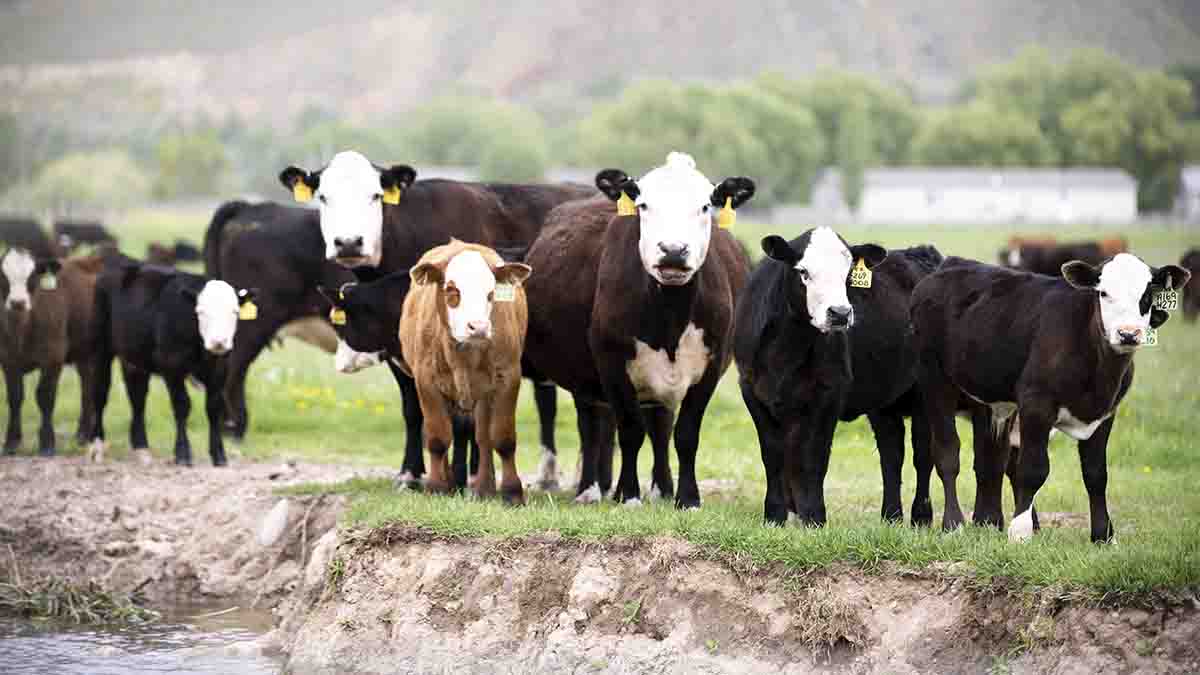
Demo on Grazing Cover Crops
University of Idaho researchers are studying how producers may boost forage production, minimize greenhouse gas emissions and improve the health of their soils through the rotational grazing of cover crops.
The research and demonstration project is part of U of I’s five-year, $55 million Innovative Agriculture Marketing Partnership for Idaho (IAMP) grant, funded by the U.S. Department of Agriculture to increase adoption of climate-smart food production practices.
Professor John Hall, a UI Extension specialist of beef and cattle management, is leading a cover crop grazing demonstration project on 35 acres at the Salmon-based U of I Nancy M. Cummings Research, Extension and Education Center, funded over five years with $125,000 from the IAMP grant.
Producers plant cover crops primarily to improve soil health and build soil organic matter. Hall’s demonstration involves bringing in 30 head of cattle to graze cover crops, thereby also capitalizing on their forage value. He’ll use temporary, electric fencing to confine cattle into smaller paddocks, moving the livestock roughly every three days. The method results in uniform grazing of forage and distribution of cattle manure to lend fertility to the system. The brief grazing duration leaves roots intact to capture more carbon and produce more forage for future grazing.
Hall plans to plant the cover crop — likely annual grasses in the first year so that he can control the broadleaf weeds with herbicide — in late April and to commence grazing about 45 days after planting. In the fall, triticale will be planted in the cover crop area for spring hay. He anticipates seeding a mixture of cover crops that provide good forage directly into the triticale during the following season.
“The advantage to using cattle on cover crops is the fact that we’re able to produce another agricultural product on the same amount of land and still capture carbon,” Hall said. “Not only are we capturing carbon in the soil, but we’re also capturing carbon in the animal, and I think people sometimes forget about that.”
Gwinyai Chibisa, an associate professor of ruminant nutrition and metabolism, will place devices in irrigated pastures and cover crop plots at the Cummings center to measure carbon dioxide emissions from cattle and soil, both before and after grazing. Results from the Cummings center will provide benchmark data. Chibisa will also work through Desert Mountain Grass Fed Beef to take emissions measurements from producers who graze cover crops for inclusion in a model. Data will be pooled with similar grazing-emissions projects ongoing throughout the country with USDA Partnerships for Climate-Smart Commodities funding.
“A lot of people, especially in the cities, think grazing is not a good thing, but there are indications that grazing can actually help capture carbon if it’s managed in the right way,” Chibisa said. “If grazing is managed well, you’re going to stimulate growth of plants and have increased carbon capture in the rooting systems.”
Producers will measure cattle weight gain and submit cover crop samples to shed light on feed quality of cover crops. Chibisa will also evaluate the potential to reduce emissions by finishing cattle on grass rather than conventionally in a feedlot.
“After grazing events, do we see any changes in terms of the release of carbon? If we have cover crops and graze them, what are some of the changes in terms of soil attributes? We want a full accounting of where the carbon goes in terms of that cycle,” Chibisa said.
The demonstrations at the Cummings center will be showcased during several Extension activities, including during field days and in videos about grazing management. The cover crop demonstration will inform producers about the ideal seeding timing and seeding rate for the region, as well as the likely forage yield, animal carrying capacity and animal performance on cover crops.
“Any time we have adult learners, especially ranchers, it’s an opportunity to create a conversation and bring in their experiences and things they have tried that may work for others, as well as the things we are demonstrating,” Hall said. “My hope is this will give people some opportunity to look and think about what might work on their ranch.”
Faces and Places
Shelley McGuire, professor and director of the Margaret Ritchie School of Family and Consumer Sciences joined Idaho Today to share details about her research into fatty acids discovered in breastmilk and the role they play in infant health.
Six CALS student members of the U of I Dairy Club recently traveled to Oregon to tour Threemile Canyon Farms in Boardman and the Wilsonview Dairy and Tillamook Creamery in Tillamook.
Pabitra Joshi, a plant sciences doctorate student, has received the Gerald O. Mott Meritorious Graduate Student Award from the Crop Science Society of America. This award recognizes top-notch graduate students pursuing advanced degrees in crop science disciplines. Joshi was nominated by Jianli Chen, professor and wheat breeder at the Aberdeen Research and Extension Center.
AVFS professor Amin Ahmadzadeh was selected as a 2024 Dairy Challenge Founder. This award recognizes those with extraordinary, consistent contributions and/or distinguished service to the North American Intercollegiate Dairy Challenge. Ahmadzadeh has been a very successful dairy challenge team coach and has led three U of I teams to national championships.
The Idaho Children’s Trust Fund (ICTF) invited (from left) Amy Roberson, an UI Extension educator of family and consumer sciences (FCS) and 4-H; Surine Greenway, an FCS Extension educator; Ling-Ling Tsao, an FCS associate professor and Katie Hoffman-McFarland an FCS Extension educator; to attend the Strengthening Families Training Institute March 20-21. They are in the second year of a grant on parenting curriculum through ICTF and were able to meet with ICTF staff for planning.
Michaela Green and Sydney Murphy, undergraduate research assistants supervised by Shiyi Chen, an assistant professor of child development within the Margaret Ritchie School of Family and Consumer Sciences, recently presented their research projects at the EHHS IDEAS Student Research Symposium. Green’s presentation, “Investigating the Association Between Young Children’s Aggressive Behavior and Metacognition” won first place in the Undergrad Oral Presentation – Ongoing Project category. Murphy presented her project, “Young Children’s Willingness to Try Novel Foods in Classroom Settings.”
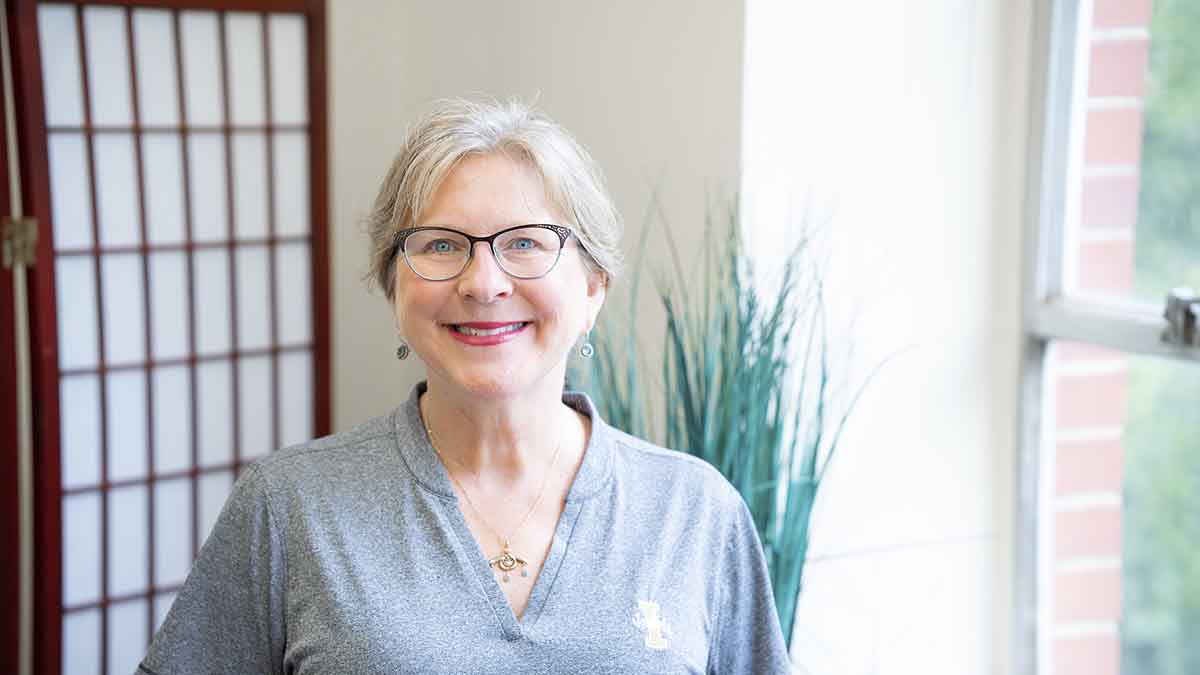
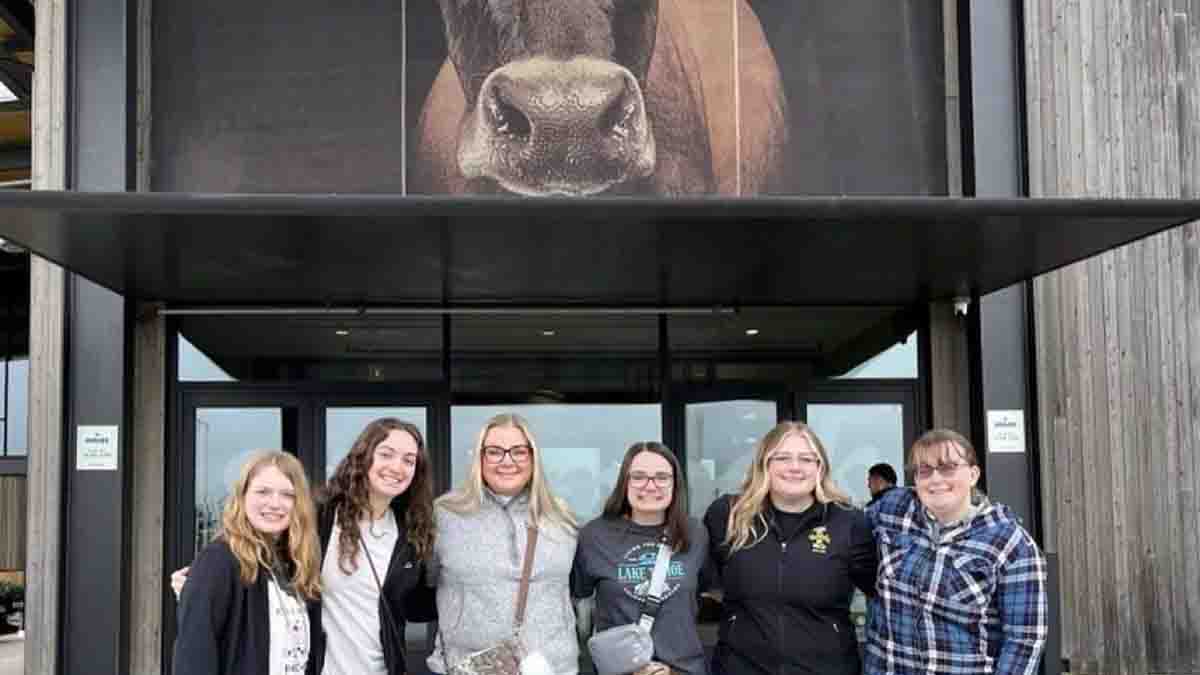
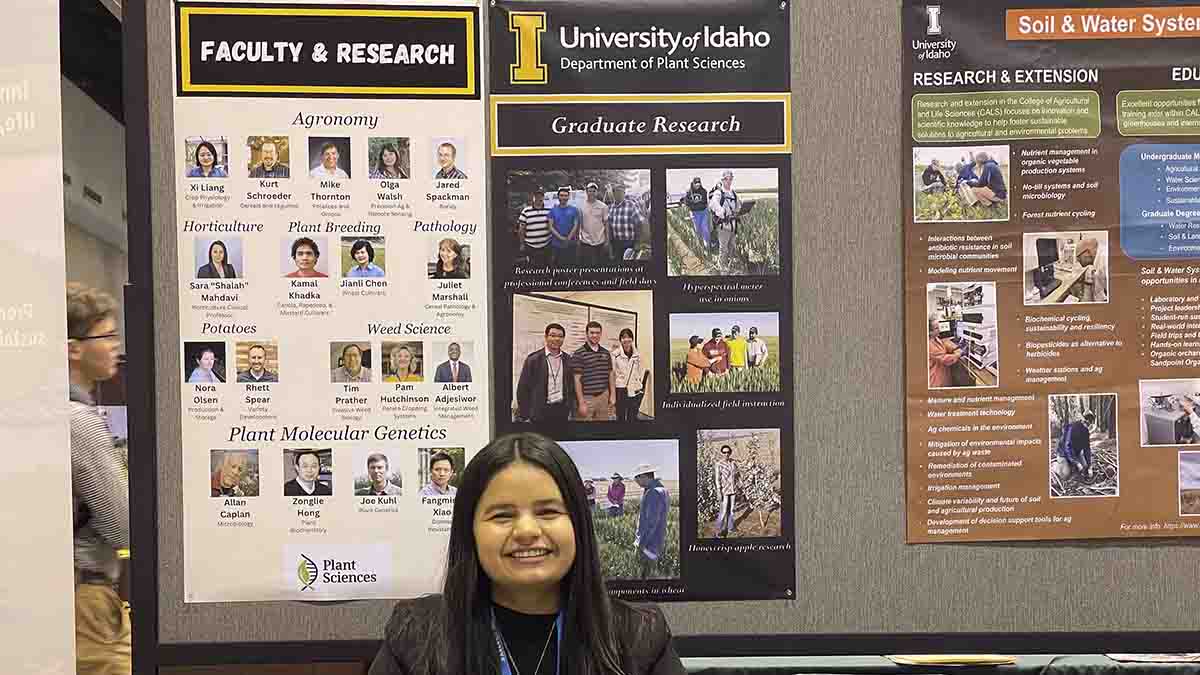
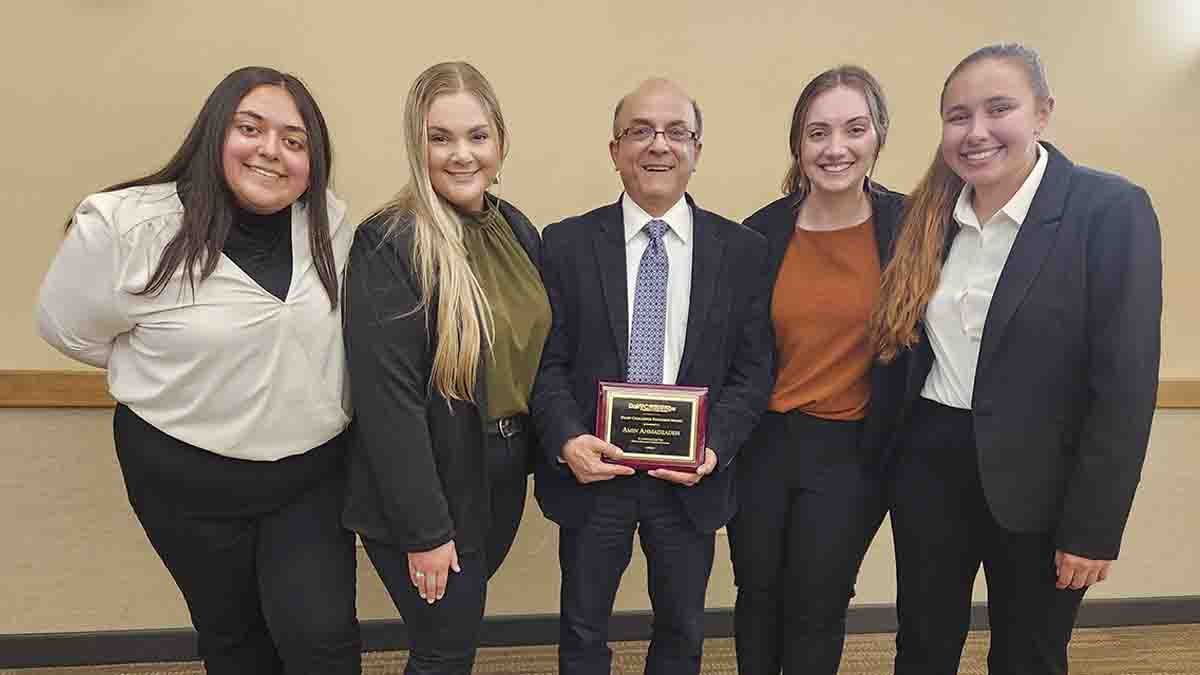
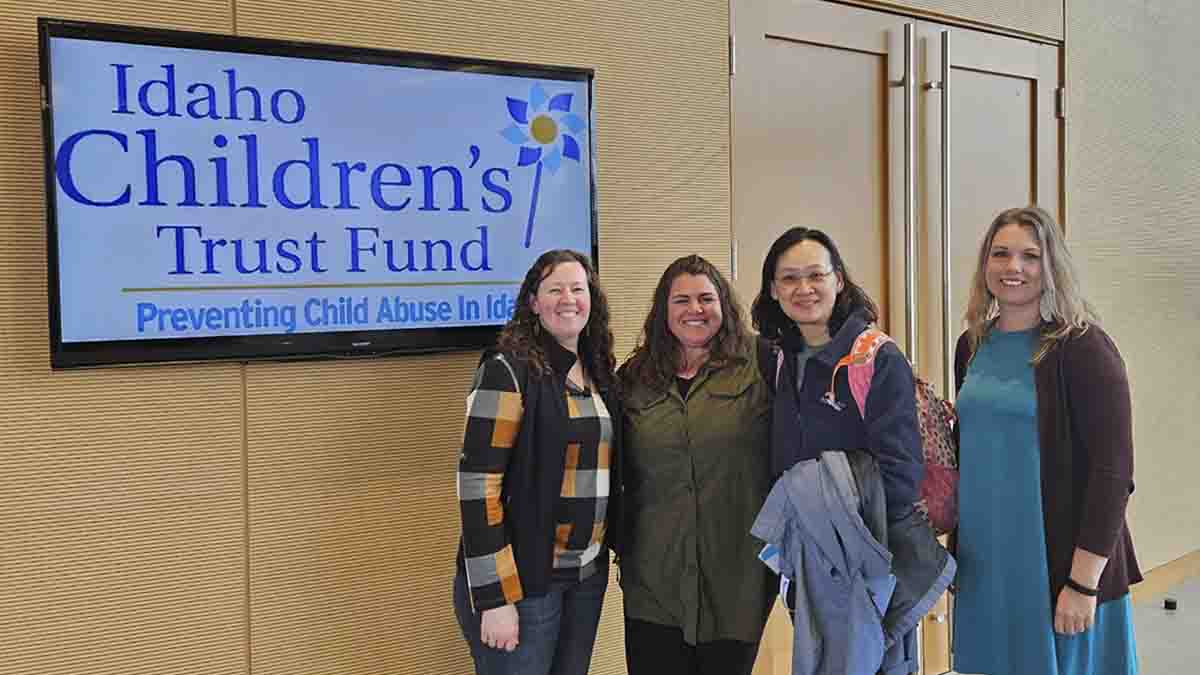
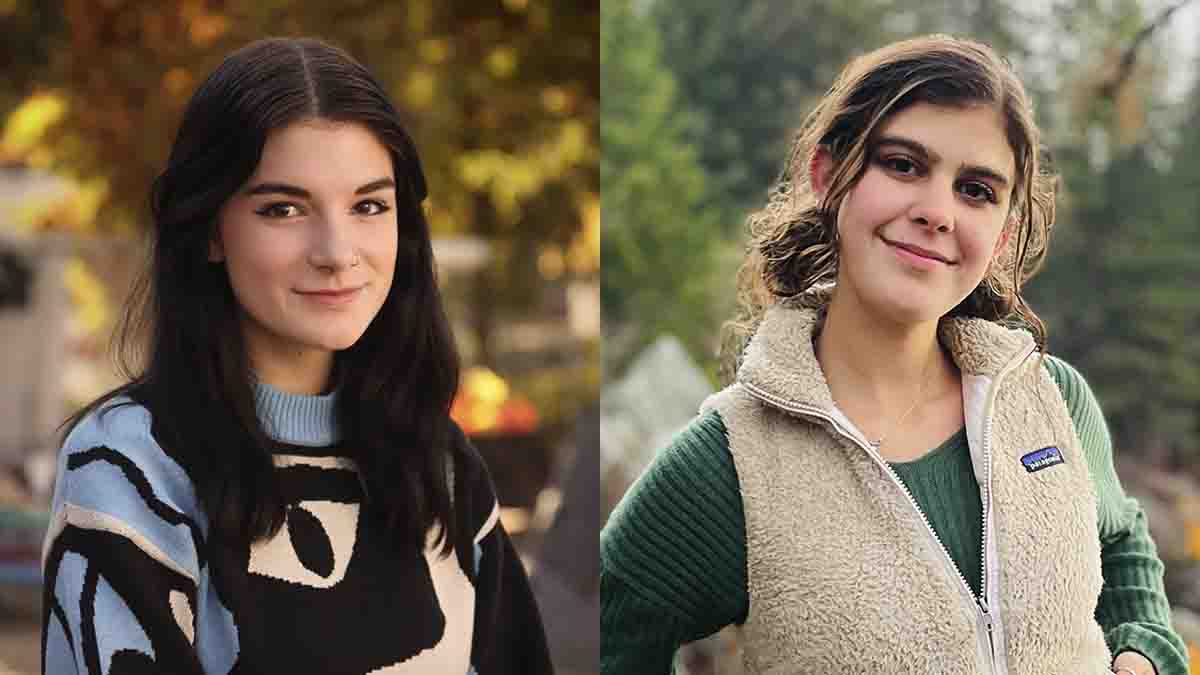
Events
- April 18 — Pressure Canning Made Easy, Online
- April 24 — CALS Awards Banquet, RSVP by April 18, Moscow
- April 25 — Moss Greenhouse Vandal Night, Jerome
- April 25, May 23 — Kids in the Kitchen Cooking Club, Online
- May 11 — CALS Commencement Reception, 11 a.m. to 12:30 p.m., Moscow
- June 22-23 — Grass Identification Course, Rinker Rock Creek Ranch near Hailey
- June 24-26 — Data Monitoring Blitz, Rinker Rock Creek Ranch near Hailey
- July 17 — Twilight Tour, Aberdeen Research and Extension Center







